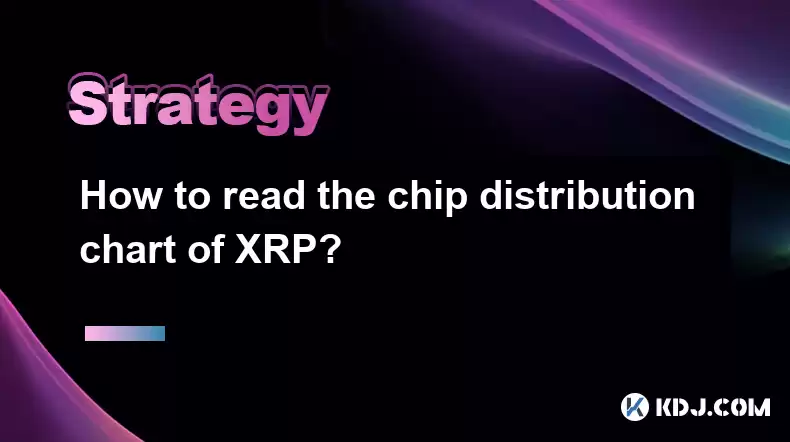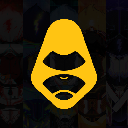-
 bitcoin
bitcoin $109523.663807 USD
-0.13% -
 ethereum
ethereum $4019.526508 USD
2.06% -
 tether
tether $1.000482 USD
0.00% -
 xrp
xrp $2.776815 USD
0.18% -
 bnb
bnb $958.942396 USD
0.12% -
 solana
solana $204.294698 USD
3.84% -
 usd-coin
usd-coin $0.999693 USD
0.00% -
 dogecoin
dogecoin $0.232115 USD
2.09% -
 tron
tron $0.338028 USD
0.84% -
 cardano
cardano $0.790920 USD
1.50% -
 hyperliquid
hyperliquid $44.871443 USD
5.60% -
 ethena-usde
ethena-usde $1.000322 USD
0.04% -
 chainlink
chainlink $21.034165 USD
2.60% -
 avalanche
avalanche $28.794831 USD
-0.54% -
 stellar
stellar $0.360466 USD
1.24%
How to read the chip distribution chart of XRP?
The XRP chip distribution chart helps investors analyze token supply dynamics by showing how XRP is spread among large, small, and middle range holders.
Apr 20, 2025 at 12:14 pm

Understanding the chip distribution chart of XRP is crucial for investors and enthusiasts who want to gain insights into the token's supply dynamics and potential market movements. The chip distribution chart, also known as the supply distribution chart, provides a visual representation of how XRP is distributed among different holders. In this article, we will explore how to read and interpret the XRP chip distribution chart, focusing on key aspects such as large holders, small holders, and the implications of these distributions.
Understanding the Basics of the Chip Distribution Chart
The chip distribution chart is a graphical representation that shows the distribution of XRP tokens across various wallet sizes. Each bar or segment on the chart represents a range of wallet balances, and the height of the bar indicates the number of wallets within that range. By analyzing this chart, you can understand how XRP is spread among different types of holders, from small retail investors to large institutional holders.
Identifying Large Holders on the XRP Chip Distribution Chart
Large holders, often referred to as whales, are entities that hold significant amounts of XRP. On the chip distribution chart, these holders are typically represented by the segments with the highest wallet balances. To identify large holders, look for the bars on the right side of the chart, which represent wallets holding large quantities of XRP.
- Look for the highest bars on the chart: These bars indicate wallets with the largest XRP balances.
- Analyze the number of wallets in each segment: A small number of wallets holding a large percentage of the total supply can indicate significant concentration among a few holders.
- Compare the distribution over time: Changes in the number and size of these large holder segments can signal shifts in market dynamics.
Analyzing Small Holders on the XRP Chip Distribution Chart
Small holders, or retail investors, are individuals or entities that hold smaller amounts of XRP. These holders are typically represented by the segments on the left side of the chart, where wallet balances are lower. Understanding the distribution of small holders can provide insights into the level of retail participation in the XRP ecosystem.
- Focus on the left side of the chart: These bars represent wallets with smaller XRP balances.
- Assess the number of small holders: A large number of small holders can indicate strong retail interest and a broad base of support for XRP.
- Monitor changes in small holder distribution: Increases in the number of small holders may suggest growing interest and adoption of XRP.
Interpreting the Middle Range Holders on the XRP Chip Distribution Chart
Middle range holders are those who fall between large and small holders. They hold a moderate amount of XRP and can influence market dynamics in different ways. These holders are represented by the segments in the middle of the chart.
- Examine the middle segments: These bars represent wallets with moderate XRP balances.
- Evaluate the distribution: A balanced distribution among middle range holders can suggest a stable and diversified holder base.
- Track changes in this segment: Shifts in the number of middle range holders can indicate changes in investor sentiment and market participation.
Assessing the Impact of Holder Distribution on XRP's Market Dynamics
The distribution of XRP among different types of holders can have significant implications for its market dynamics. A concentrated distribution among a few large holders can lead to higher volatility, as these whales have the power to move the market with their trades. Conversely, a more evenly distributed supply among a large number of small and middle range holders can contribute to a more stable market.
- Monitor the concentration of large holders: High concentration can lead to increased volatility and potential price manipulation.
- Evaluate the breadth of small holder participation: A broad base of small holders can provide stability and support for XRP's price.
- Consider the balance of middle range holders: A balanced distribution among these holders can contribute to a more resilient market.
Using the Chip Distribution Chart for Investment Decisions
Investors can use the insights gained from the XRP chip distribution chart to make more informed investment decisions. By understanding the distribution of XRP among different types of holders, investors can better assess the potential risks and opportunities associated with the token.
- Assess the risk of large holder concentration: If the supply is heavily concentrated among a few large holders, consider the potential for increased volatility.
- Evaluate the strength of retail support: A large number of small holders can indicate strong community support and potential for long-term growth.
- Consider the stability provided by middle range holders: A balanced distribution among these holders can suggest a more stable investment environment.
Frequently Asked Questions
Q: Can the chip distribution chart predict future price movements of XRP?A: While the chip distribution chart provides insights into the current state of XRP's supply distribution, it cannot predict future price movements with certainty. However, understanding the distribution can help investors assess potential risks and opportunities associated with the token.
Q: How often should I check the XRP chip distribution chart?A: It is advisable to check the XRP chip distribution chart periodically, such as weekly or monthly, to stay updated on any significant changes in the distribution of XRP among different types of holders.
Q: Are there other tools I should use in conjunction with the chip distribution chart for a comprehensive analysis of XRP?A: Yes, in addition to the chip distribution chart, investors should also consider other tools such as market sentiment analysis, technical analysis, and fundamental analysis to gain a more comprehensive understanding of XRP's market dynamics and potential investment opportunities.
Q: How can I access the XRP chip distribution chart?A: The XRP chip distribution chart can be accessed through various cryptocurrency analytics platforms and blockchain explorers that provide detailed data on XRP's supply distribution. Some popular platforms include CoinMarketCap, CoinGecko, and XRP Scan.
Disclaimer:info@kdj.com
The information provided is not trading advice. kdj.com does not assume any responsibility for any investments made based on the information provided in this article. Cryptocurrencies are highly volatile and it is highly recommended that you invest with caution after thorough research!
If you believe that the content used on this website infringes your copyright, please contact us immediately (info@kdj.com) and we will delete it promptly.
- BTC, mNAV, and Treasury Companies: A New Yorker's Take
- 2025-09-28 02:25:12
- Crypto Crossroads: Is Remittix Overtaking XRP as the Altcoin of Choice?
- 2025-09-28 02:45:14
- ASTER's Surge vs. BlockchainFX Presale: Where's the Smart Money Moving?
- 2025-09-28 03:05:13
- ApeX Coin's Wild Ride: Surge, Protocol Evolution, and What's Next
- 2025-09-28 02:45:14
- Ethereum, Vitalik Buterin, and the Future Outlook: A New Yorker's Take
- 2025-09-28 03:45:13
- ASTER Price Prediction 2025-2030: Will This Crypto Darling Keep Soaring?
- 2025-09-28 03:05:13
Related knowledge

Practical parameter settings for a Bitcoin multi-timeframe moving average system
Sep 18,2025 at 10:54pm
Optimizing Timeframe Combinations for Bitcoin Trading1. Selecting appropriate timeframes is crucial when building a multi-timeframe moving average sys...

How can I filter out false breakouts in Dogecoin high-frequency trading?
Sep 22,2025 at 01:00am
Understanding False Breakouts in Dogecoin Trading1. A false breakout occurs when Dogecoin's price appears to move beyond a defined support or resistan...

Techniques for identifying tops and bottoms in the Bitcoin on-chain NVT model
Sep 20,2025 at 07:54pm
Understanding the NVT Model in Bitcoin Analysis1. The Network Value to Transactions (NVT) ratio is often described as the 'P/E ratio' of the cryptocur...

What does the surge in open interest in Bitcoincoin futures mean?
Sep 20,2025 at 11:18pm
Understanding the Surge in Dogecoin Futures Open Interest1. A surge in open interest within Dogecoin futures indicates a growing number of active cont...

How can I use the Ethereum USDT premium to gauge market sentiment?
Sep 18,2025 at 11:55pm
Understanding the Ethereum USDT Premium1. The Ethereum USDT premium refers to the price difference between USDT (Tether) traded on Ethereum-based plat...

What should I do if Ethereum staking yields decline?
Sep 20,2025 at 06:18am
Understanding the Causes Behind Declining Ethereum Staking Yields1. The Ethereum network transitioned to a proof-of-stake consensus mechanism with the...

Practical parameter settings for a Bitcoin multi-timeframe moving average system
Sep 18,2025 at 10:54pm
Optimizing Timeframe Combinations for Bitcoin Trading1. Selecting appropriate timeframes is crucial when building a multi-timeframe moving average sys...

How can I filter out false breakouts in Dogecoin high-frequency trading?
Sep 22,2025 at 01:00am
Understanding False Breakouts in Dogecoin Trading1. A false breakout occurs when Dogecoin's price appears to move beyond a defined support or resistan...

Techniques for identifying tops and bottoms in the Bitcoin on-chain NVT model
Sep 20,2025 at 07:54pm
Understanding the NVT Model in Bitcoin Analysis1. The Network Value to Transactions (NVT) ratio is often described as the 'P/E ratio' of the cryptocur...

What does the surge in open interest in Bitcoincoin futures mean?
Sep 20,2025 at 11:18pm
Understanding the Surge in Dogecoin Futures Open Interest1. A surge in open interest within Dogecoin futures indicates a growing number of active cont...

How can I use the Ethereum USDT premium to gauge market sentiment?
Sep 18,2025 at 11:55pm
Understanding the Ethereum USDT Premium1. The Ethereum USDT premium refers to the price difference between USDT (Tether) traded on Ethereum-based plat...

What should I do if Ethereum staking yields decline?
Sep 20,2025 at 06:18am
Understanding the Causes Behind Declining Ethereum Staking Yields1. The Ethereum network transitioned to a proof-of-stake consensus mechanism with the...
See all articles









































































